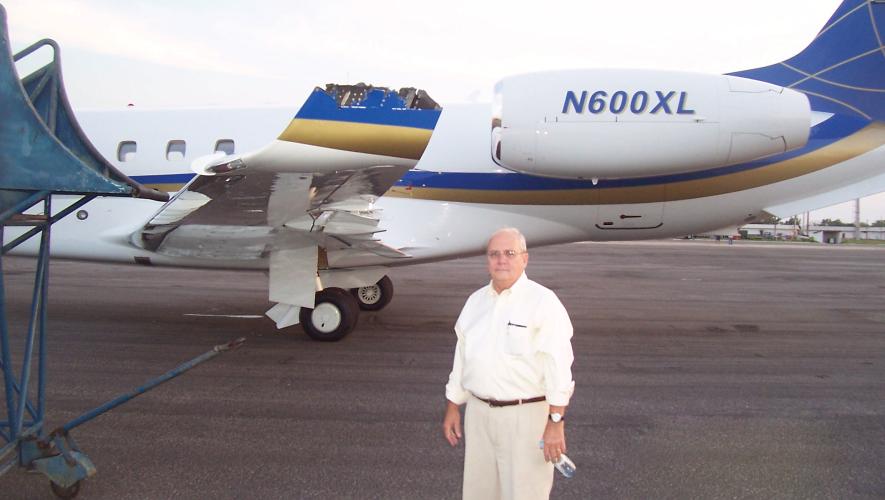Aircraft departing from two U.S. airports have a quicker and more environmentally friendly option for de-icing than traditional glycol. At New York John F. Kennedy (JFK) International Airport and Wisconsin’s Rhinelander-Oneida County Airport (RHI), departing aircraft that require de-icing can roll into an open-ended hangar where targeted infrared (IR) waves remove frost, snow and ice with a minimum of glycol usage, increasing aircraft throughput and decreasing de-icing time and cost. While these systems are not new, growing environmental concerns and airline cost-cutting measures could prompt new interest in IR de-icing technology.
“IR de-icing systems can reduce glycol usage by up to 90 percent,” according to David Speirs, president and CEO of Niagara Falls, N.Y.-based Radiant Aviation Services, which markets the IR de-icing technology. “The system generates IR waves that are tuned to the absorption rate of ice. The waves do not heat the air, just the frost or snow, and they penetrate only about two microns into the aircraft skin.”
Even though the IR system can remove frost, snow and ice without Type I glycol, the FAA still requires Type IV glycol anti-icing fluid to be applied. “But since the aircraft is warm and dry when the anti-icing fluid is applied, the anti-ice is much more effective, dramatically reducing the chances of needing to return for a second de-icing,” Speirs said. Type I glycol is occasionally used in conjunction with the IR system to remove thick accumulations of snow and ice more rapidly. Considering that it takes between 500 and 1,000 gallons of glycol (costing about $12 per gallon) to de-ice a typical commercial aircraft, using IR can save $5,000 to $10,000 per aircraft.
According to RHI airport director Joseph Brauer, Great Lakes Airlines, the last regional carrier that consistently used the IR de-icing system at the airport, reported that its glycol usage was down by 60 percent. RHI’s 120- by 140-foot facility was completed in 1998 to handle small general aviation, corporate and 19- to 50-seat commuter aircraft that serve the small northern Wisconsin airport.
RHI charges flat rates for using the IR de-icing system in five-minute increments, with most aircraft incurring about $125 in charges. RHI’s current carrier, SkyWest, did not use the IR system during the 2012-13 winter season, but is considering its use this winter. “Even without the airlines, we have general aviation aircraft that use the system about three or four times per season,” Brauer said. “Once the system is warmed up, [the IR system] takes the frost off an aircraft in about 30 seconds using less than one dollar’s worth of energy.”
Even more important to airlines than the reduced glycol costs is the quicker throughput achieved by using IR de-icing instead of the traditional glycol dousing. According to documents provided by Radiant using data from the JFK facility for the 2010-2011 winter season, average snow/ice removal time for a Boeing 737-size aircraft was approximately 17 minutes from the time the aircraft rolls into the hangar until it exits. Boeing 747-300-size aircraft averaged 19 minutes. This means that three to four 737s or two 747s can be de-iced per hour, versus approximately 45 to 90 minutes per aircraft with conventional glycol de-icing.
Real Estate for De-Icing Facilities Limited
But although the IR de-icing technology has significant environmental and efficiency benefits for both airports and aircraft operators, the technology has been slow to catch on.
“It’s actually not just the cost of the [IR de-icing] facility, but finding a good spot on the airport for it,” said Christopher Soleski, aviation practice leader for Hatch Mott MacDonald, the civil engineering firm headquartered in Iselin, N.J., that assisted with the design of the IR de-icing facility at JFK. “It’s difficult to find the right piece of land that’s required to make an IR structure happen. Conventional de-icing pads are as close as possible to the runway to minimize re-icing problems. The IR structure for a large aircraft can be 100 feet tall, and a structure that tall cannot be built close to the runways. Instead the airport has to give up valuable real estate that could be used for commercial value.”
Completed in 2006, the $12 million IR de-icing facility at JFK was an experiment funded approximately 75 percent through FAA grants, with the Port Authority of New York and New Jersey (PANYNJ) funding the rest. AIN sources have indicated that PANYNJ plans to incorporate IR de-icing technology in a new, larger facility at JFK, although PANYNJ representatives would not confirm this.
The fixed-structure requirement of the IR system is one detriment that caused the demise of a Radiant IR system at Newark (EWR) in 2005 after its operator, Continental Airlines, upgraded its fleet to Boeing 737s with winglets that extended beyond the width of the IR structure.







